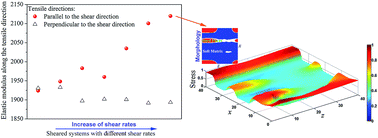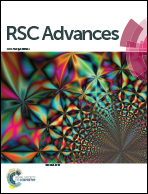Multiscale simulation of shear-induced mechanical anisotropy of binary polymer blends
Abstract
Mechanical properties of polymer blends are not only determined by characteristics of individual polymer but also depend significantly on processing such as shear fields. A sequential mesoscopic simulation method was adopted to study the influence of shear processing on morphology orientation and mechanical responses. This method utilizes mesoscopic dynamic simulation (MesoDyn) for structural evolution and lattice spring model (LSM) for correlating the structure and mechanical behaviour. The dispersed phase in meso-structures moves from spherical to elliptical and then to columnar structure with the increase of shear rates. The morphology orientation leads to the anisotropy of elastic modulus. During the tensile test, different fracture processes were observed with two kinds of toughness relationship in blends which correspond to brittle phases dispersed in a ductile matrix and in reverse ductile phases dispersed in a brittle matrix. The tensile strength along shear processing direction increases with the increase of shear rates when the dispersed phase is ductile, while the strength decreases when the dispersed phase is brittle. The strength perpendicular to shear processing direction is mainly related to the soft matrix and interfacial strength. The morphologies of polymer blends at different shear rates and their corresponding mechanical behavior are well correlated by the mesoscopic simulation. The simulation results also yield guidelines to manufacture desired polymer blends with shearing process, e.g. extrusion or injection molding.


 Please wait while we load your content...
Please wait while we load your content...